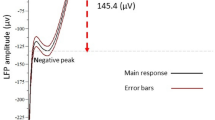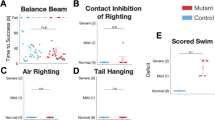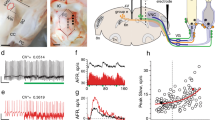Abstract
UP to the present, experimental methods have yielded very little information concerning vestibular toxicity due to streptomycin ; in medical practice these accidents are very frequent (80–90 per cent of cases treated). Indeed, the fundamental work of Molitor and his collaborators leads to the conclusion that most of the animals used in laboratory work show no recognizable vestibular disturbance, whether as the result of a single heavy dose of streptomycin or of several fractional doses administered over a period of time. According to Molitor1, dogs are the only animals which show any evidence of cerebellar or vestibular damage comparable to that which has been observed in human beings, whereas mice, frogs, rats and guinea pigs are unaffected. Although Molitor kept under observation a considerable number of animals, we believe that his conclusions should not be accepted as final.
This is a preview of subscription content, access via your institution
Access options
Subscribe to this journal
Receive 51 print issues and online access
$199.00 per year
only $3.90 per issue
Buy this article
- Purchase on SpringerLink
- Instant access to full article PDF
Prices may be subject to local taxes which are calculated during checkout
Similar content being viewed by others
References
Molitor, H., Graessle, O. E., Kuna, S., Mushett, C. W., and Silber R. H., J. Pharm. Exp. Therap., 86, 151 (1946).
Magnus, R., "Körperstellung" (Berlin, 1924).
Cf. C.R. Soc. Biol., 142, 45 (1948).
Ehrlich, P., Berl. Klin. Wochens., 44, 280 (1907).
Author information
Authors and Affiliations
Rights and permissions
About this article
Cite this article
CAUSSÉ, R., GONDET, I. & VALLANCIEN, B. Vestibular Effect of Streptomycin in the Mouse. Nature 162, 929 (1948). https://doi.org/10.1038/162929a0
Issue date:
DOI: https://doi.org/10.1038/162929a0



